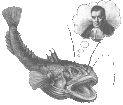UW Aquatic & Fishery Sciences Quantitative Seminar
Eli Holmes
NOAA, NWFSC
Multivariate time-series forecasting of the NE Arabian Sea Oil Sardine (Sardinella longiceps) fishery using satellite and upwelling covariates
Abstract
The Indian oil sardine (Sardinella longiceps) is one of the most commercially important fish resources of the south-west coast of India (SE Arabian Sea), where it contributes ca 40% of the total marine fish catch. Landings of the oil sardine are highly seasonal and peak in Oct-Dec after the summer monsoon period. Productivity in the SE Arabian Sea (SEAS) is strongly influenced by seasonal coastal upwelling associated with the summer monsoon (June-Sept), which brings strong coastal winds and rain to the region, and a number of studies have established positive correlations of landings with covariates associated with upwelling intensity. The reasons for these correlations are unclear, although multiple mechanisms are plausible. Oil sardines feed on diatoms and locally high chlorophyll is known to be associated with locally higher sardine catch by fishers. Precipitation, which is correlated with upwelling, also triggers spawning activity which brings sardines into coastal areas where they are susceptible to fishing. In addition to direct correlations, lagged correlations are also possible if high productivity is associated with stronger age cohorts. In this talk, I will present work on the development and testing of forecasting models using satellite-derived covariates associated with coastal upwelling intensity, namely sea surface temperature, sea surface chlorophyll, sea surface height, and precipitation, as well as an upwelling index derived from wind intensity and direction. I will present work testing exponential smoothing models with multivariate covariates and time lags as an approach to forecasting. Preliminary work suggests the presence of correlation between upwelling indices (SSH, SST, and Chl-a) at a two-year lag and at spatial locations that correspond with what is known regarding the coastal zones with strong upwelling. Forecasts were tested using a simple forecast of the previous year's catch, a generalized linear model using only lagged covariates, and a time-series model (exponential smoothing model) with and without covariates.

